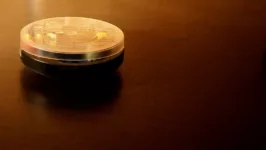Robot vacuum cleaners have become very popular recently. They’re right out of every science fiction work from the Jetsons to Isaac Asimov. Although they’re coming down in price, they’re still more expensive than standard vacuum cleaners. The selection of iRobot Roombas range from just under $300 for the Roomba 650 to the deluxe Roomba 980 for almost $1000. Nevertheless, many are willing to pay a little extra to have a machine tidy up for them.
Roomba robotic vacuums and their kin won’t replace standard vacuum cleaners anytime soon, but they can take a lot of work off your hands. Much depends on what you need them to do, so let’s take a look at what makes a good robot vacuum.
Floor types
A good robot vacuum cleaner has to recognize and adjust to the various surfaces it will clean. It should be able to switch programs to handle carpet, tile, hardwood, and other surfaces. Most people don’t even know how to do this with their manually controlled vacuum cleaners.
And it’s not just about cleaning. A thick carpet shouldn’t bring a robot vacuum to a complete halt. The cleaning program shouldn’t bunch up throw rugs, either.
Navigation
Robot vacuums need to negotiate obstacles without breaking anything. They can either bump into them and change directions or, by more sophisticated technology, sense the obstacles and not touch them at all. The sensor technology and data processing in the high-end Roombas like the 980 are really amazing.
Narrow spaces are a problem for most robot vacuum cleaners, so those that can get in to tighter corners and between chair legs are better. The Neato Botvac Connected actually hunts for spots that are messy and difficult to clean.
Robot vacuum cleaners have to be emptied regularly and be charged at a station where they park. Most will not find their way back to the station and park themselves. They just run out of energy and stop. You have to put them back yourself so they can charge. But some like the Roomba 980 now boast of being able to get back to the charger on their own, so all you have to do is empty the dust bin occasionally.
Noise
People commonly run their robot vacuums when they are gone, so the noise is not usually an issue. Others, on the other hand, run them at night, so a quiet, pleasant sound is important. Often, the trade-off is between a quiet and a powerful robot, so it is vital to weigh the importance of those two qualities.
Battery Life
Battery life translates into how long the machine can run, which means how much floor it can clean on a single charge. If the home is large, a 90-minute charge may be barely enough. If the owner lives in a small apartment, 60 minutes is more than adequate.
Pets
Pets are people and should always be taken into consideration. Does a high-pitched whine you may not be able to hear bother the dog? Does the machine scare the cat? Is your cockatiel going to start imitating the machine like it does the can opener and doorbell?
Will the machine efficiently pick up dog and cat hair? If the filter is really efficient, it could make the house cleaner for those allergic to animals. The ILIFE A4 is great at picking up pet hair and for cleaning hard and small carpet floors.
The Future
As robot cleaners adopt the technology of driverless cars, room cleaning will become easier and more efficient. Can a drone that cleans windows be far behind?








